Often called “silent destroyers,” termites and other wood-damaging pests can quietly compromise the structural integrity of homes and businesses. In South Texas, warm, humid conditions allow termites, carpenter ants, and wood-boring beetles to stay active nearly year-round. These pests tunnel deep within beams, floors, and walls, hollowing wood from the inside out and causing costly damage long before visible signs appear. Beyond structural harm, their frass, dust, and droppings can trigger allergies and respiratory irritation, while species like carpenter ants and bees may bite or sting when disturbed. At LONESTAR Pest Solutions, our wood-destroying insect control service combines detailed inspections, targeted treatments, and preventive strategies to eliminate active infestations and protect your property from future damage.
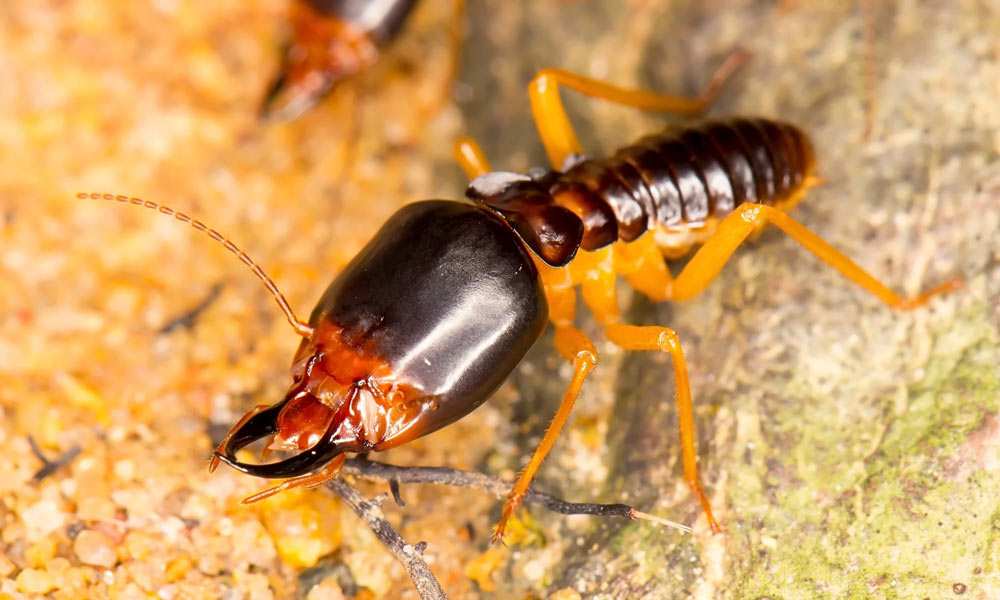
Different wood-destroying insects require specific solutions. Here are some of the common types often found in our surroundings.
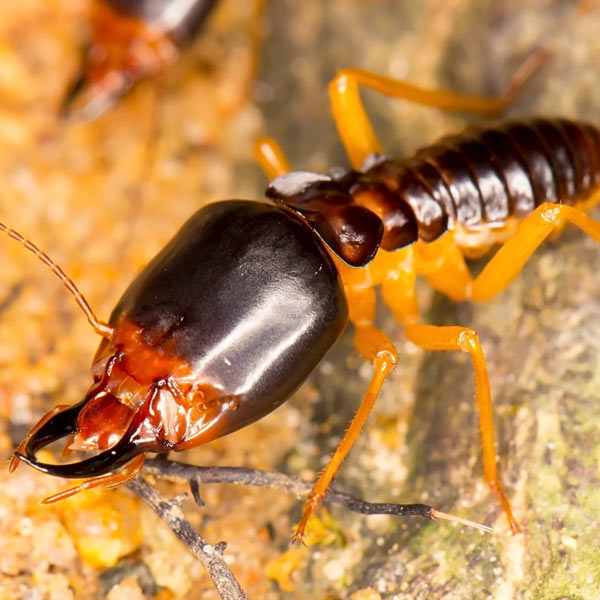
Often called “silent destroyers,” termites feed on wood and cellulose materials, consuming structures from the inside out. They can go undetected for years, causing costly structural damage before signs like mud tubes or hollow-sounding wood appear.
Size, Color: About ¼ inch long; creamy white workers and darker brown swarmers.
Identifying Characteristics: Straight antennae, soft bodies, and equal-length wings on swarmers.
Where does it nest/hide? Underground, in walls, or inside wood beams and foundations.
When does it typically reproduce? Spring to early summer; swarmers leave colonies to form new ones.
What is it attracted to? Moisture, wood, and warm, hidden areas within structures.
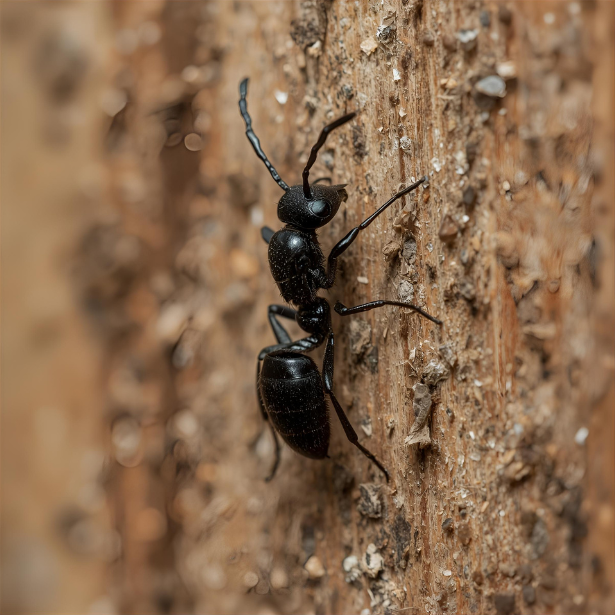
Unlike termites, carpenter ants do not eat wood but excavate it to build nests. Over time, their tunneling weakens beams, decks, and wooden siding. Infestations often start in moist or rotting wood but can spread into sound wood if left untreated.
Size, Color: ¼–½ inch long; black or dark reddish-brown.
Identifying Characteristics: Large body, bent antennae, and narrow waist between thorax and abdomen.
Where does it nest/hide? Damp or decaying wood, wall voids, decks, and window frames.
When does it typically reproduce? Spring and summer; winged swarmers emerge to start new colonies.
What is it attracted to? Moist or softened wood and sweet food sources indoors.
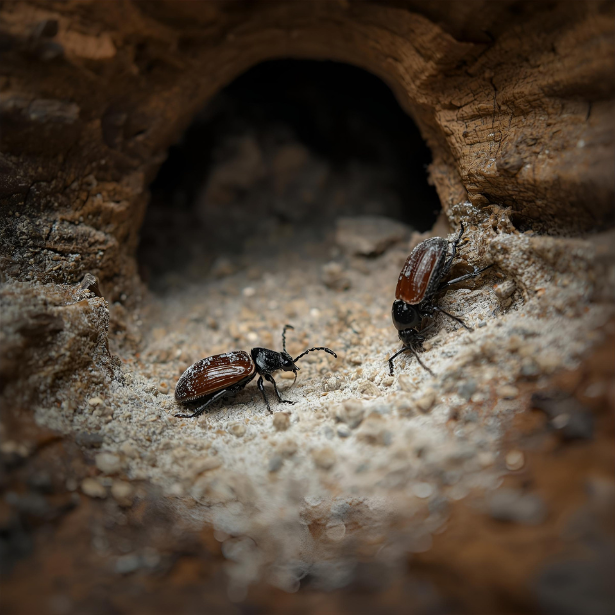
These tiny beetles lay eggs in cracks and pores of wood. When the larvae hatch, they bore deep into the wood, reducing it to a fine, powdery dust. Over time, powderpost beetles can damage hardwood floors, furniture, and structural timbers.
Size, Color: 1/8–¼ inch long; reddish-brown to black.
Identifying Characteristics: Slender bodies with tiny, round exit holes in infested wood.
Where does it nest/hide? Inside hardwoods, furniture, and structural timbers.
When does it typically reproduce? Late spring to summer; eggs laid in wood pores or cracks.
What is it attracted to? Unfinished or untreated hardwoods and humid environments.
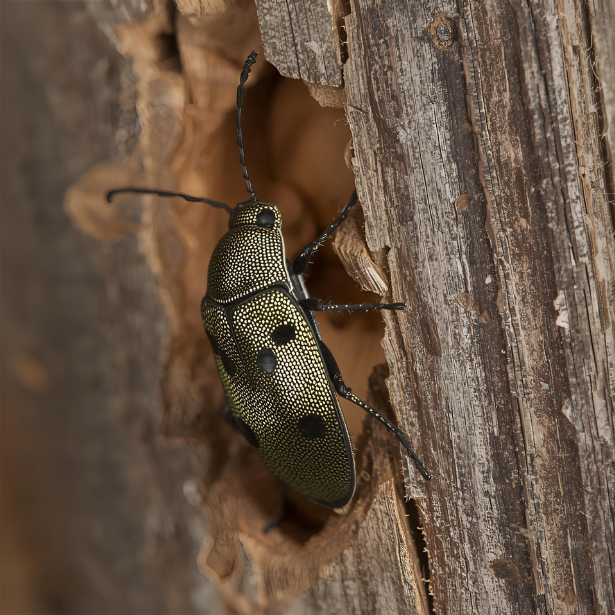
This group includes several species whose larvae feed on both hardwoods and softwoods. They leave behind exit holes, frass (wood dust), and weakening of furniture, flooring, and structural components. Severe infestations can compromise both aesthetics and structural integrity.
Size, Color: 1/8–½ inch long; reddish-brown to black, varying by species.
Identifying Characteristics: Exit holes, sawdust-like frass, and weakened wood surfaces.
Where does it nest/hide? Wooden beams, flooring, furniture, and stored lumber.
When does it typically reproduce? Spring and summer; larvae may remain inside wood for months or years.
What is it attracted to? Damp or aged wood with exposed grain.
LONESTAR’s wood-destroying insect (WDI) control service is designed to stop active infestations and prevent future damage. Through comprehensive inspections, targeted treatments, and long-term protection strategies, LONESTAR Pest Solutions safeguards your home or business from the costly risks posed by termites, carpenter ants, beetles, and other wood-damaging pests.
LONESTAR Pest Solutions thoroughly inspects your property to identify the type of wood-destroying insect, locate areas of activity, and assess the extent of any structural damage.
Using safe and effective methods, LONESTAR targets wood-destroying insects at their source, addressing both active infestations and hidden colonies to ensure long-lasting protection for your property.
After treatment, LONESTAR monitors the affected areas, provides preventive guidance, and applies additional measures if needed to keep wood-destroying insects from returning and causing further damage.
Lorem ipsum dolor sit amet, mea ei viderer probatus consequuntur, sonet vocibus lobortis has ad. Eos erant indoctum an, dictas invidunt est ex, et sea consulatu torquatos. Nostro aperiam petentium eu nam, mel debet urbanitas ad, idque complectitur eu quo. An sea autem dolore dolores.
As temperatures drop, some species seek shelter indoors and continue nesting activity.
Carpenter ants move deeper into homes for warmth.
Termites may stay active in heated structures, continuing to damage wood.
Finished carpenter bee nests leave entry holes that other pests may exploit.
Our comprehensive pest inspection and prevention program focuses on early detection and elimination of conditions that attract unwanted pests. Through ongoing monitoring and tailored maintenance, we help ensure a safe, pest-free environment for your facilities year-round.
A proactive rodent management program reduces costly damage, contamination, and emergency callouts often associated with reactive treatments. By addressing potential issues early, LONESTAR Pest Solutions helps protect both your facilities and your budget through consistent, preventive care.
Our hassle-free scheduling and routine visits allow your team to stay focused on daily operations while we handle pest prevention behind the scenes. With reliable service you can count on, LONESTAR Pest Solutions ensures your facilities remain protected—without interruption or added effort on your part.
From effective elimination to long-term prevention, we provide more than just products — we provide peace of mind. Our professional-grade solutions are designed to target pests quickly and efficiently, while our certified experts are here to guide you every step of the way. With personalized guidance and the assurance of high-quality standards, you’ll have the confidence to take back control of your environment.
Great customer service with Team Theresa at the front desk & Cameron, my technician. They are a joy to work with. Theresa consistently like clock work schedules my appointments quarterly & timely. Cameron has done an incredible job going above & beyond maintaining my grandson’s sandbox outside – ant free! It is a such a relief. Never mind his meticulously attention to detail inside my home is much appreciated. Both Theresa & Cameron are a valuable asset to Lone Star Pest. Call them!
— Susie Gold
Lonestar does our quarterly pest control and we had to call for re-spray of our kitchen due to these 100 plus degree temperature days. They sent Eddie over right away and he was so helpful telling me to pick up dog food every day, plug drains daily, use vinegar solution for drains, and make sure they always spray an area of the custom cabinets that has a gap between the cabinets and wall. He was the best! Really educated me and was so patient and even funny as I stared wide eyed over his knowledge of all things cockroaches.
— Carolyn Wafford
Have used Lonestar for years for normal treatments inside and outside, but just recently used them for mosquito control prior to an outdoor graduation pool party. EXCELLENT RESULTS AND PHENOMENAL SERVICE! We had them do a general area fogging and then leave-behind portable remote controlled area “mister” — we haven’t seen a mosquito in two weeks!
— John Seamon
We have used Richard’s team for years. Recently we learned our neighbor’s had termites. We contacted Lone Star to learn about our options. The solution provided was better than solutions our neighbors suggested. In fact, we learned of several pitfalls that our neighbors might encounter (beyond higher cost over the long term).
— Timothy Smith